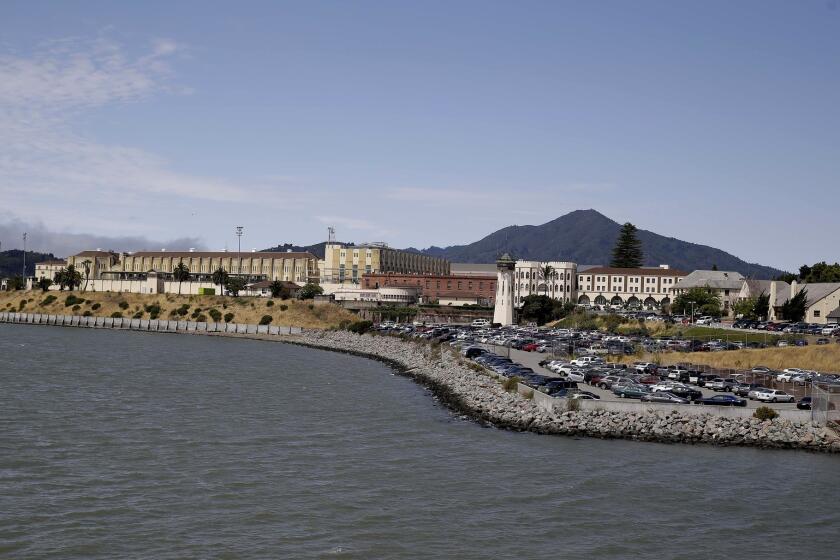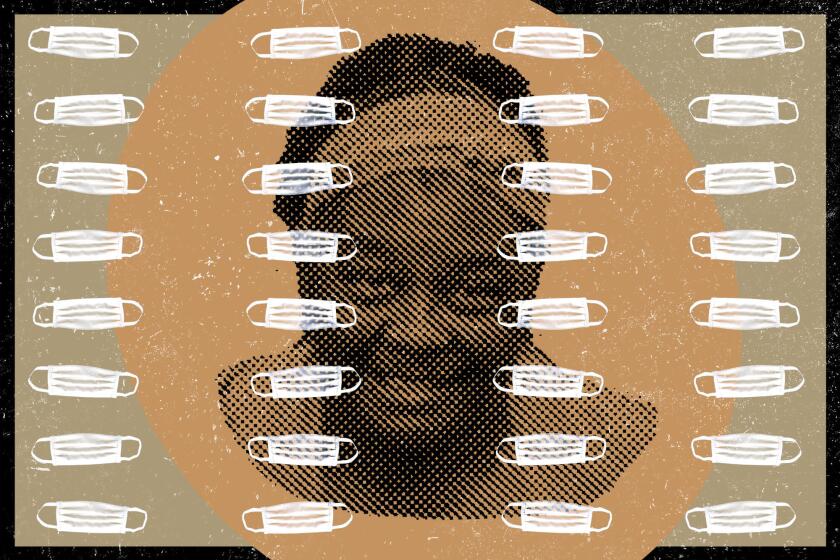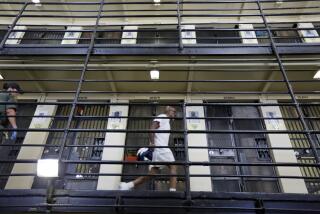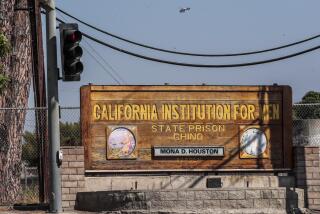Serial killer, respected guard and many others killed by COVID-19 surge in California prisons

- Share via
Despite repeated assurances that corrections officials have made progress in controlling spread of the coronavirus, California prisons are in the midst of a deadly surge.
At least 46 inmates have died from COVID-19 since Dec. 25, along with two staff members. They include one of America’s most prolific serial killers, Samuel Little, and Officer George Solis, a husband and father of two who died on Christmas Day.
“The prison system is not doing their part to keep them safe,” said Terressa Johnson, whose sister is an inmate at the women’s facility in Chowchilla, where there are more than 300 active cases. “In the last six months, it’s gotten worse.”
More than 160 people have died in the prison system from causes attributed to COVID-19, according to the Department of Corrections and Rehabilitation, with nearly 44,000 infected. Since a crackdown on staff safety protocols in recent weeks, active infections have fallen by about half compared to a highpoint in December, when coronavirus cases topped more than 10,000.
Still, the prison system has a rate of confirmed cases of 461 per 1,000 inmates, with new infections recorded daily. The overall California rate is about 69 per 1,000 residents.
While much of California is experiencing a surge, there were hopes the prison system could do better because officials can restrict access and control the environment. But since a massive outbreak at San Quentin over the summer in which 28 inmates died, four other institutions have logged double-digit death tolls.
San Quentin prison must reduce its inmate population by at least 1,000, a California appeals court rules in a case filed after a COVID-19 outbreak.
The state prison bureaucracy has come under intense criticism for the events at San Quentin — the outbreak there began after infected inmates from the California Institute for Men at Chino were transferred to the Marin facility without adequate safety measures — and for failing to control spread after learning harsh lessons in past months.
This latest increase has raised concerns that officials are continuing to put prisoners and staff at risk.
Nearly 4,700 new cases of COVID-19 have been reported in prisons in the past two weeks. Seventeen facilities have diagnosed a hundred or more cases in that time.
Since late December, the California Men’s Colony in San Luis Obispo has seen its number of positive cases surge, with 1,017 in the last two weeks — about a third of the prison.
Some say the number of inmate deaths might be even higher than reported because not all causes have been determined. In a statement, corrections department spokeswoman Dana Simas said that the agency has a “review and reporting process to verify if the death is COVID-19 related” before adding it to the official total.
Those concerned include relatives of inmates at Lancaster, which has seen its COVID-related death toll soar to 10 in the last month.
It’s also where Little, who admitted to killing as many as 90 women, died as he was serving a life sentence. Records show Little died of pneumonia Dec. 30 after contracting COVID-19 in a housing block where many others were ill.
More than half the inmates at the Lancaster facility, about 1,400, have become infected — a rate more than four times greater than that of Los Angeles County, where the prison is located. The number of active infections has dropped in recent weeks to 64 but sources said that coincides with less testing. About 15% of inmates in Lancaster have been tested in the past 14 days, according to state figures.
Many inmates and family members say failures by the Department of Corrections have enabled the outbreaks, pointing out that with prisons on lockdown since the spring, guards and other staff are likely the ones carrying the virus inside.
Johnson said that her sister’s cellmate tested positive for COVID-19, but was left inside the cell with Tomiekia for 12 hours. “It’s just really bad,” Johnson said of conditions inside the prison.
Simas said there have been no reports of delays in moving COVID-19 positive inmates away from healthy ones.
“All COVID-19 positive patients at [the Chowchilla facility] have been moved in a timely manner in response to the pandemic” and rehoused in an isolation unit, Simas said.
The correctional officers, medical staff and others working inside the 35 state prisons aren’t faring much better than the inmates. More than 13,000 of the 66,000 employees have become infected. At present, more than 2,800 are positive
The Corrections Department has increased its oversight of staff compliance with safety mandates, requiring weekly testing and the wearing of a surgical mask during work hours. Failure to do so can result in discipline including suspension without pay.
Still, the complaints from inmates and family repeat across facilities. Among them: staff who continue to flout mask rules; sick inmates quarantined in cells with those who are healthy; test results that take weeks to get back; no access to phone calls, laundry and even safe water at times.
Inmates who made masks and furniture for as little as 35 cents an hour say they felt pressure to stay on the job, even as the coronavirus spread through the prison factories.
“The staff is not following proper PPE protocol,” said the loved one of an inmate at the California Medical Facility near Vacaville. The person asked to remain anonymous for fear the inmate would face retaliation. “No masks, no hand sanitizer, no extra cleaning supplies.”
Sherri Lashure, an inmate at the California Institute for Women, wrote in a Jan. 6 email, “Staff routinely congregate in groups without face coverings. … On numerous occasions, we have run out of cleaning and disinfecting supplies without absolutely any means of getting more.”
Simas denied the allegations, saying that “CDCR is providing the incarcerated population with cleaning supplies. … We take addressing COVID-19 and protecting both staff and in the incarcerated population very seriously.”
More than 400 inmates at the women’s prison in Riverside County have contracted the virus; official counts say the facility currently has two active cases. Many inmates, however, said they were suspicious of case counts because some prisoners refuse to test, fearing they will be isolated in poor conditions, and because it can take weeks to get results back.
Some families said proper healthcare for those who have fallen ill is lacking, though some guards and inmates at facilities that house special needs prisoners have begun receiving vaccines.
Jessalynn Graham, a sick inmate at the women’s prison in Riverside, recently wrote to a friend that she isn’t receiving necessary care, though she has shortness of breath, coughing and chest pains.
Elizabeth Gransee, spokeswoman for the California Correctional Health Care Services, which provides medical care inside prisons, said the agency “takes these allegations very seriously, but that “CIW has no substantial delays in medication administration and only two active COVID cases.”
On Tuesday, Graham claimed that medical staff had failed to bring her prescribed electrolyte drinks, and when her cellmates complained, “medical refused to come,” she wrote.
“The nurses are so behind because there are soo many medical emergencies,” Graham wrote. “I have seen 4 people leave on a stretcher to the hospital.”
More to Read
Sign up for Essential California
The most important California stories and recommendations in your inbox every morning.
You may occasionally receive promotional content from the Los Angeles Times.













